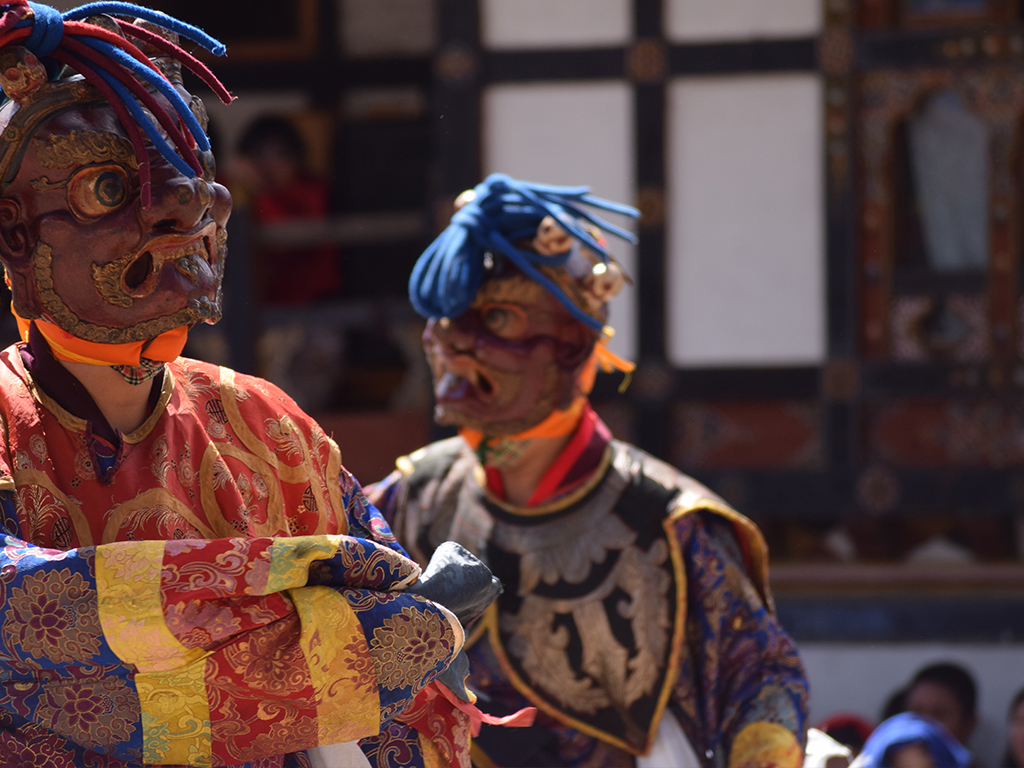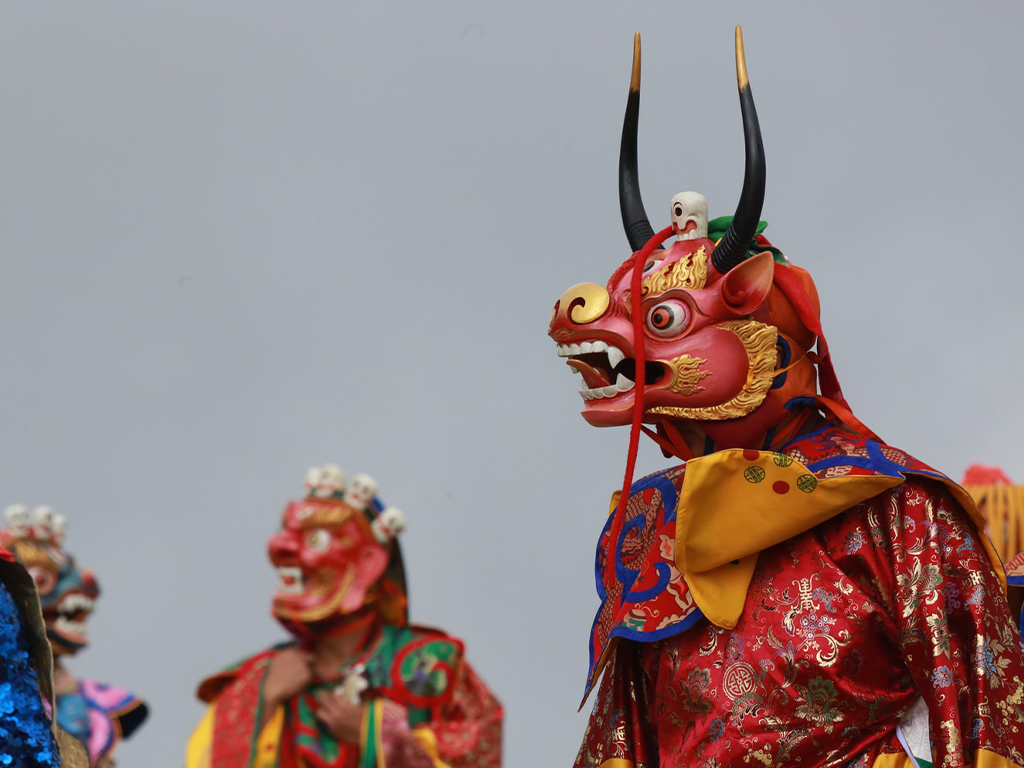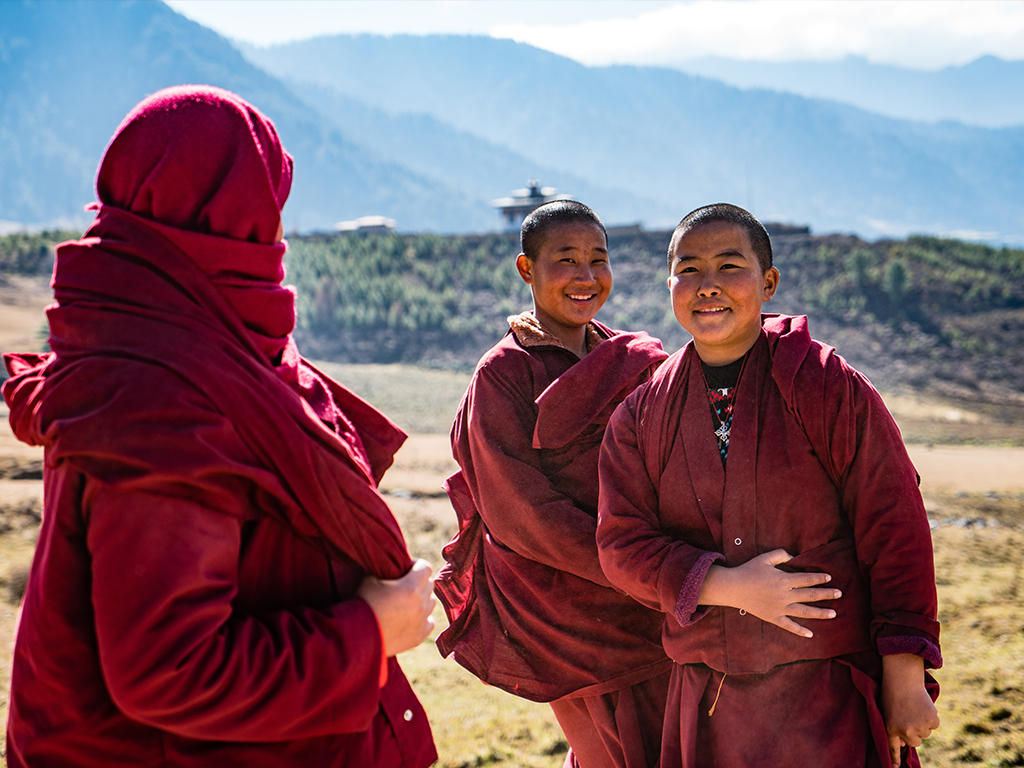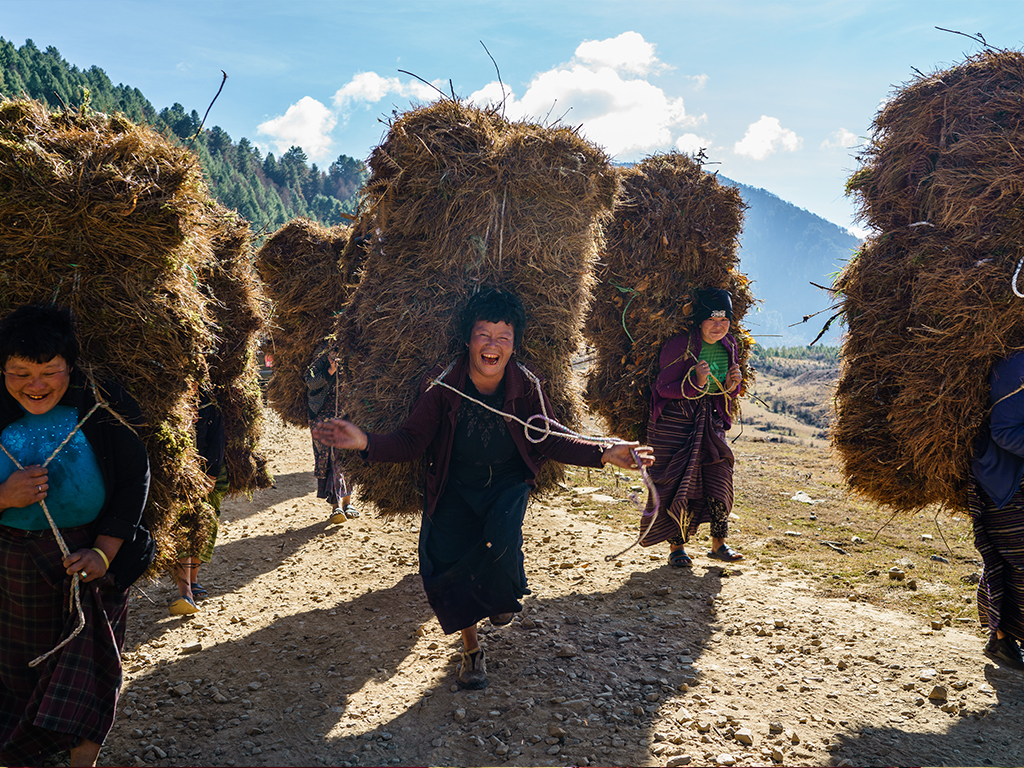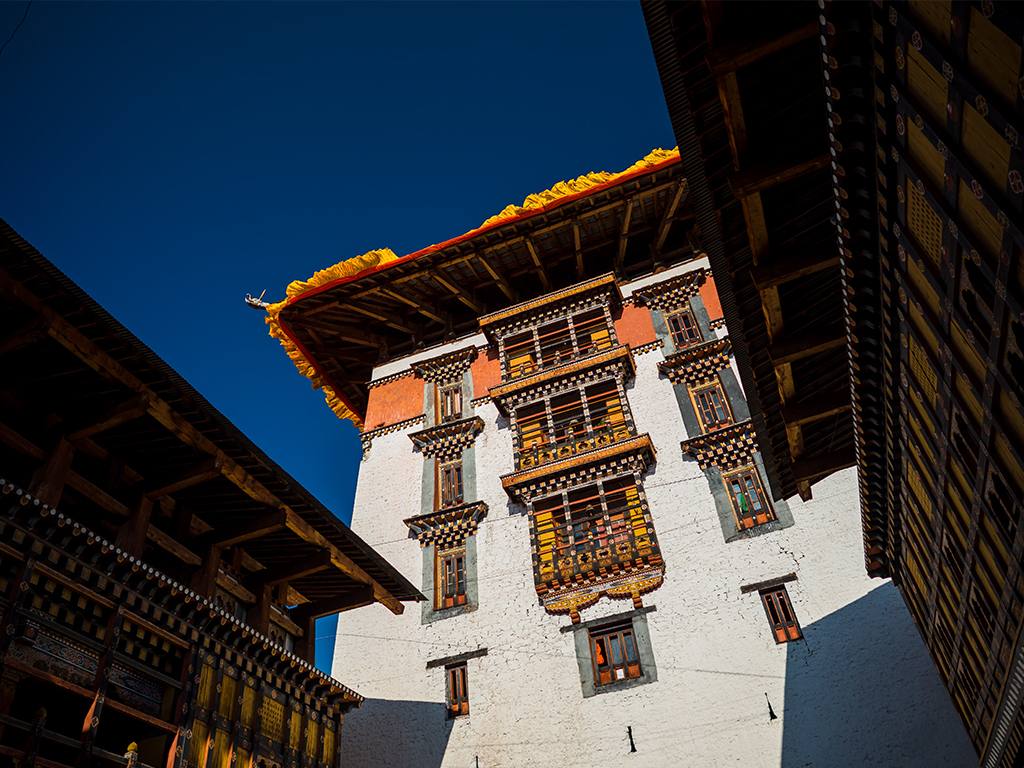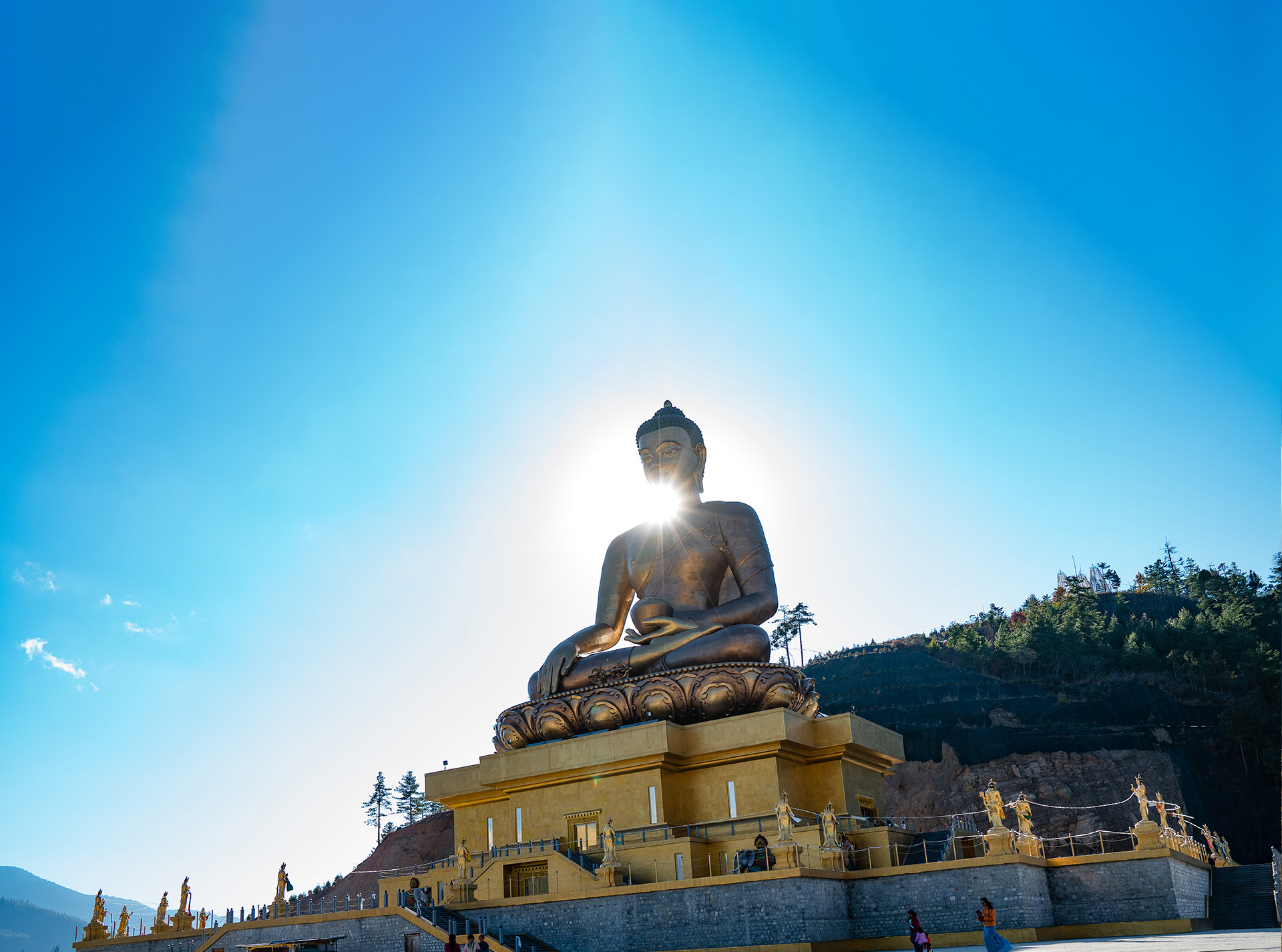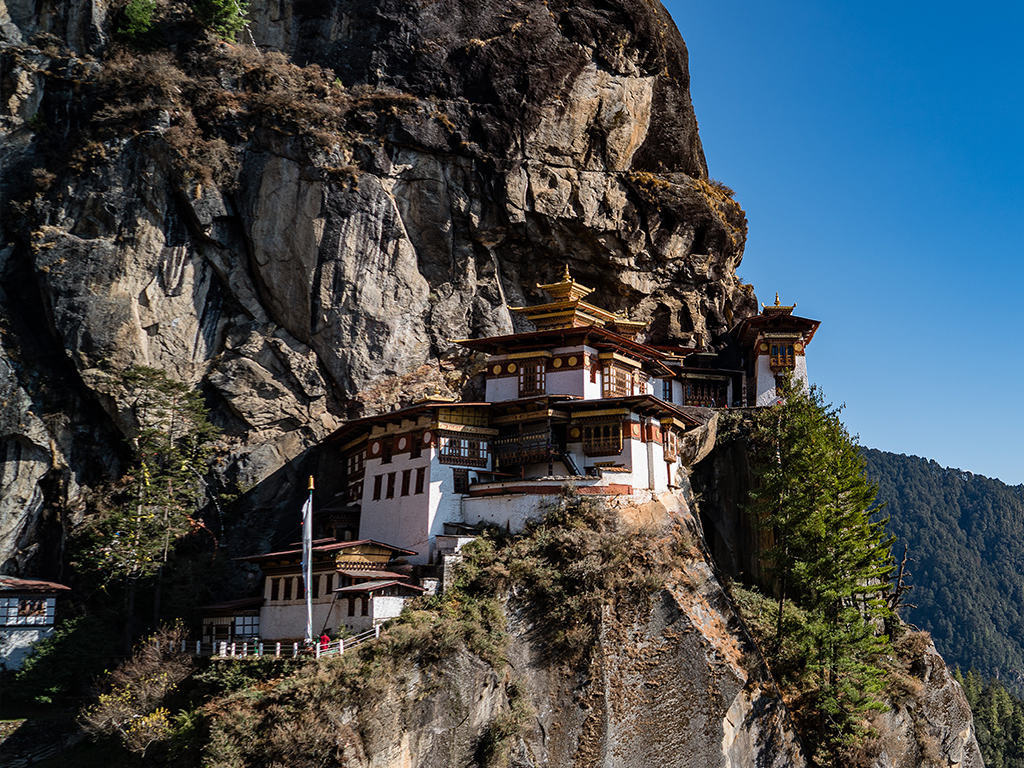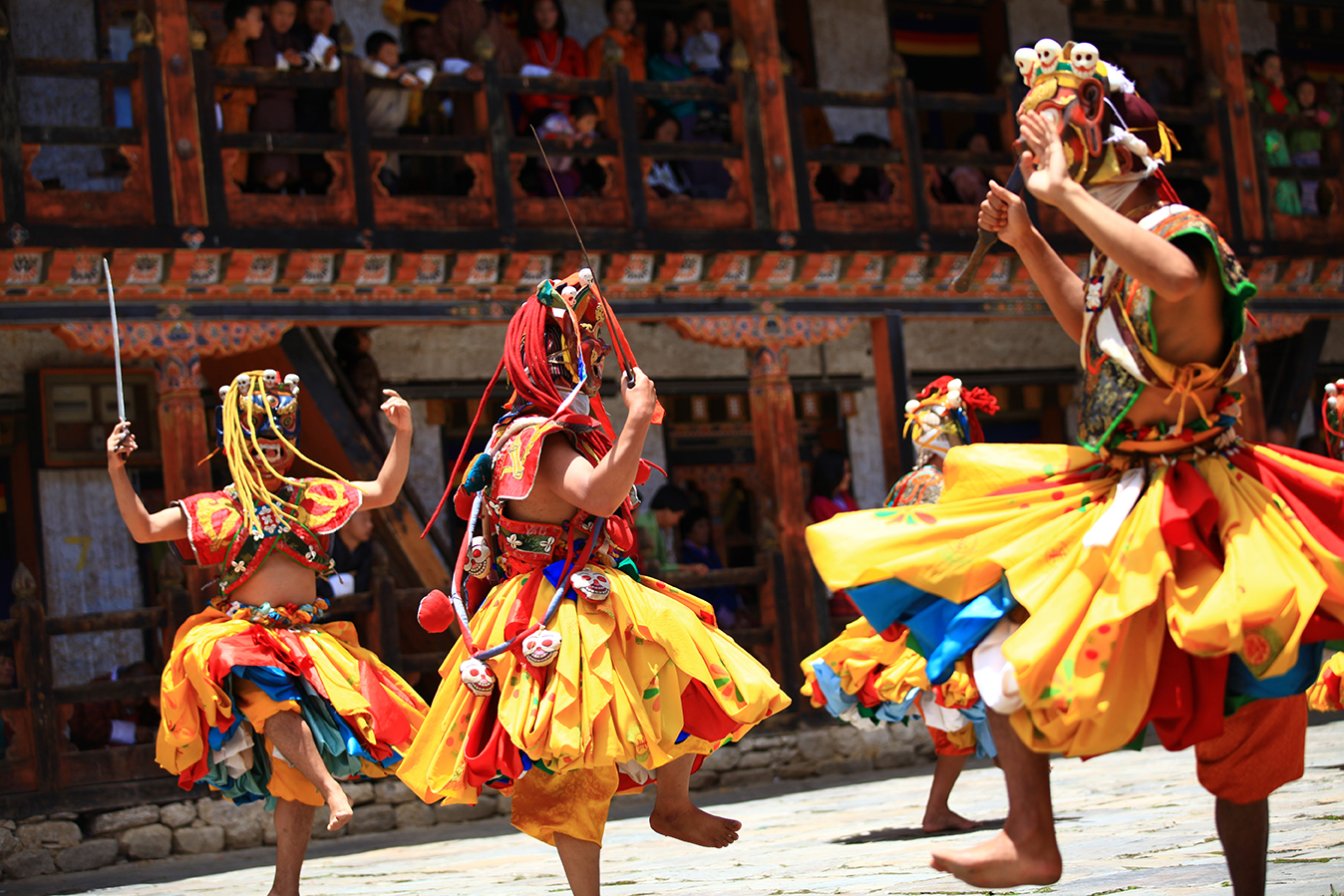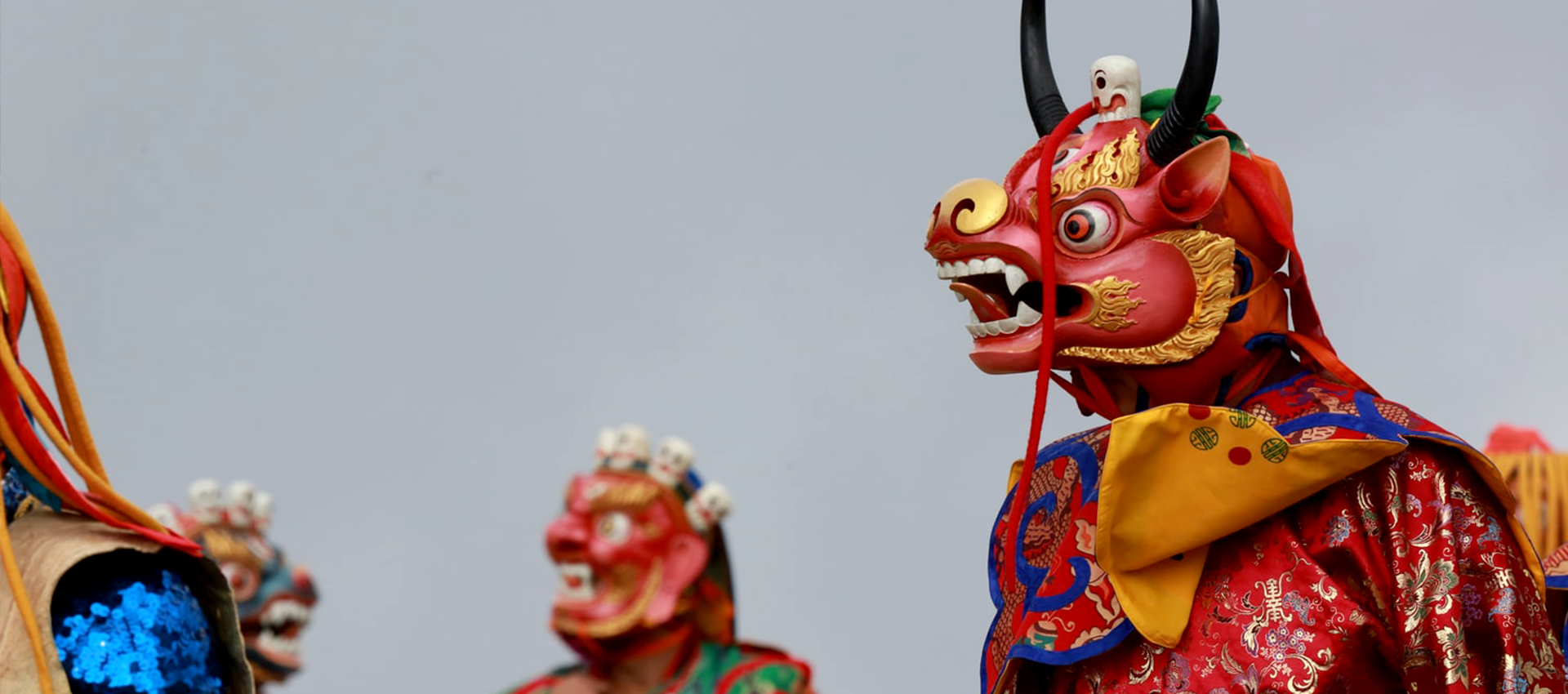
THE JAMBAY LHAKHANG FESTIVAL TOUR
- Home /
- Bhutan /
- Bhutan Festival Tours /
- Festival & Cultural Tours /
- THE JAMBAY LHAKHANG FESTIVAL TOUR
This four day festival is held in the premises of 7th century Jampay Lhakhang temple in Jakar is to com- memorated an establishment of Jambay Lhakhang temple in 7th century and also to honor Guru Rinpoche. In addition to the traditional mask dances, there are few dances unique to this festival. The annual Jampa Lhakhang Drup Tsechu is well known for the sacred naked dance known as Ter Cham and Mewang or the fire blessing. The sacred naked dance is performed at mid night inside the courtyard of the temple and is usually not permitted for tourists. A fire dance is held in the evening to bless infertile women so that they may bear children. Dances were composed mostly by Terton Pema Lingpa, the great treasure discoverer of the 15th century, who lived in the valley.
Itinerary In Detail
-
Day 01: Arrival in Paro (Bhutan) and Drive to Thimphu (2,248 m / 7,380 ft.) – 55 Km / 1.5 hr.
After breakfast proceed to Kathmandu’s International Airport to board the Druk Air or Bhutan Airlines Flight to Paro. After completion airport formalities transfer to nearby restaurant for some refreshment and lunch.
Later start scenic drive to Bhutan’s capital, Thimphu, which is home to many attractions. Thimphu became a town in 1961 and grew as the capital of Bhutan. Earlier it was a small settlement and was developed by the King Jigme Dorje Wangchuk. Today the city sprawls across the western slopes of the Wang Chhu river valley, with several government offices located around Tashichoe dzong. It houses the seat of government and the office of His Majesty King Jigme Singey Wangchuk. There are lots of sightseeing attractions of which some of the highlights are the General post office, handicraft centre, national library etc.
Upon arrival check in at a hotel. Later in the evening visit Tashichhodzong, the beautiful medieval fortress/monastery which houses most of the Government’s office and King’s Throne room. It is also the summer residence of Je Khenpo, the Chief Abbot.
Overnight at hotel.
-
Day 02: Drive to Punakha en-route visit Chimme Lhakhang (1,310 m / 4,296 ft.) – 70 km / 3 hrs.
After breakfast, start drive eastwards to the Punakha Valley. Continue ascending to Dochu La (pass) to view the 108 Stupas, commissioned by a former Queen as a memorial to those who lost their lives during the low intensity conflict in late 2002 when Bhutan evicted Indian rebels camped in the jungle on the Bhutan – Indian border. On a clear day you will witness a breathtaking view of the eastern Himalaya and depending on the time of the year the vista can vary from alpine snow (November – March)
Punakha holds the title as the winter capital because of its more temperate climate. Arriving into the valley visit Chimi Lhakhang, a monastery built by Lama Drukpa Kuenley (also known as the Divine Madman), which is a pleasant, easy 20 minute walk across paddy fields. It is believed that childless women who visit the temple will conceive after receiving a “wang” (blessing) from the resident monk. Continue with a visit to the nunnery and an excursion along a scenic country lane to the small village of Talo to wander the beautiful & peaceful gardens of the local temple.
Overnight at hotel.
-
Day 03: Rafting, Sightseeing & Drive to Phobjica Valley (3,000 m / 9,840 ft.) – 70 km / 3 hrs.
In the morning rafting in female river of Punakha, (For 45mins and 2 levels). We will conclude rafting close by Punkha Dzong & walk to magnificent Punakha Dzong. It was built strategically at the junction of Pho Chhu and Mo Chhu rivers in 1637 by Shabdrung Ngawang Namgyal to serve as the religious and strative centre of the region; Punakha Dzong has played an important role in Bhutan’s history. Damaged by four catastrophic fires and an earthquake, the Dzong has been fully restored by the present King.
After sightseeing tour leave Punakha and drive to village of Nawang (a village of typical Bhutanese Style) to share lunch with the family famers and after lunch to experience how the local people use their OX to plug their Field and also can see how they make dire product from their cattle . (There could be something more, what usually local people do during that time of the year). Later continue drive to Phobjica Valley.
Overnight at hotel.
-
Day 04: Visit Gyagtey Gompa & Explore around beautiful Phobjika Valley.
Before 2011 the electricity in Phobjikha valleys came only from solar or mini hydro plants. In late 2011 underground cabled electricity is gradually connecting the valley to the national grid. Potatoes are this region’s primary cash crop once exported to India & Nepal.
After breakfast we drive almost 45 to one of the remotes village of Gangtey to see the life of high altitude people, how they pull their life without very much mordent fertility. Here we will see how the people of that area worship nature (believing in Mountain god / shamans). The members can choose their own local friend and visit their home to how they make Potato & Cheese curry (one of the famous food of Bhutan). Despite this women do weaving of their own cloth from yak & sheep wool. We will have a lunch together with locals. Meantime the old people tell us the stories of their life till the date.
Later on drive back Phobjika Valley – and hike around the home to the rare Black Necked Cranes migrating from the Tibetan plateau to escape the harsh winter. Currently there are about 300 cranes residing in this valley and the Royal Society for Protection of Nature (RSPN) is taking every measure to ensure the safety of the Cranes. While the cranes reside in the winter valley for 4/5 months the village folks are not allowed to make loud noises or fish in the river that runs through the valley. Spend the day exploring the fascinating glacier valley.
Overnight at hotel.
-
Day 05: Drive to Bumthang via Throngsa (2,600 m / 8,528 ft.) & Witness Festival in the Evening – 193 km / 7 hrs.
Am: Start the scenic drive crossing 3 passes over 3000 meters. The route offers magnificent views of the Himalayas and beautiful landscape through scattered hamlets and forests of rhododendrons and pine. We will pass through 18th Century Chendebji Chorten en-route and stop in beautiful town Throunga- meaning new village. The town mainly consists of fresh Tibetan refugees but the most impressive of all is the Trongsa Dzong.
Pm: Later after lunch continue drive to Bumthang. Upon arrival check in at hotel for some rest and refreshment.
Eve: After early dinner proceed to 07th centaury Jambay Lakhang Monastery to witness the first day ceremony of Jambay Lakhang Festival. Later transfer back to hotel.
Overnight at hotel.
-
Day 06: Full day witness Jambay Lakhang Festival
Am: After breakfast transfer to Jambay Lakhang Monastery to witness the Festival.
Pm: Transfer back to hotel for lunch and some rest.
Eve: Visit Mebar Tso (Burning Lake) and later in the eveing attend the pray of Buddhist Nuns. Later return back to hotel for dinner.
Overnight at hotel.
-
Day 07: Drive back to Punakha (1,310 m / 4,300 ft) – 197 km / 8 hrs.
After early breakfast start drive back Punakha. Rest of the day is free for leisure.
Overnight at hotel.
-
Day 08: Drive back to Paro (2,200 m / 7,216 ft) via Punakha & Thimphu– 147 km / 6 hrs.
After early breakfast start drive back Paro. Upon arrival check in at a hotel.
Overnight at hotel.
-
Day 09: Excursion of Paro (2,200 m / 7,216 ft.)
Am: After breakfast transfer through a beautiful valley to the watch tower or locally known as Ta-Dzong. It was housed into the National museum in the 1960s by the third King Jigme Dorji Wangchuck. The seven floors museum highlights various aspects of Bhutanese culture and history dating back to the 7th century. A short walk downhill to the Rinpung Dzong which serves as the administrative center and school for monks. Walk down crossing traditional old Bridge & proceed to Paro Town for lunch.
After lunch proceed to transfer to National Archery Ground to enjoy the Archery (Dha) Sport. The national sport is the Archery (Dha). The bow and arrow play a significant role in many Bhutanese myths and legends; images of the gods holding a bow and arrows are considered especially favorable.
Archery was declared the national sport in 1971 when Bhutan became a member of the United Nations. Bhutan also maintains an Olympic archery team. Archery tournaments and competitions are held throughout the country. Archery is played during religious and secular public holidays in Bhutan, local festivals (tsechu), between public ministries and departments, and between the dzongkhag and the regional teams.
Later on proceed for a sightseeing tour of ruined fortress of Drugyel dzong which still attracts visitors due to the strategic location of the fort.
Overnight at hotel.
-
Day 10: Departure from Bhutan.
Free until final departure transfer to Paro International Airport.
10 Days From
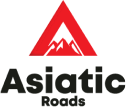
Any Question?
Feel free to call our travel experts.
+977 9851189018, +977 9801089018
info@asiaticroads.com
10 Days From

Any Question?
Feel free to call our travel experts.
+977 9851189018, +977 9801089018
info@asiaticroads.com
10 Days From

Any Question?
Feel free to call our travel experts.
+977 9851189018, +977 9801089018
info@asiaticroads.com
Reviews
In my 2 week stay, John was very professional and took me around to experience all that Kathmandu and surrounding areas has to offer. Sites were seen and many locals were met through John’s network.

Steven Stone
TravellerIn my 2 week stay, John was very professional and took me around to experience all that Kathmandu and surrounding areas has to offer. Sites were seen and many locals were met through John’s network.

Steven Stone
Traveller10 Days From

